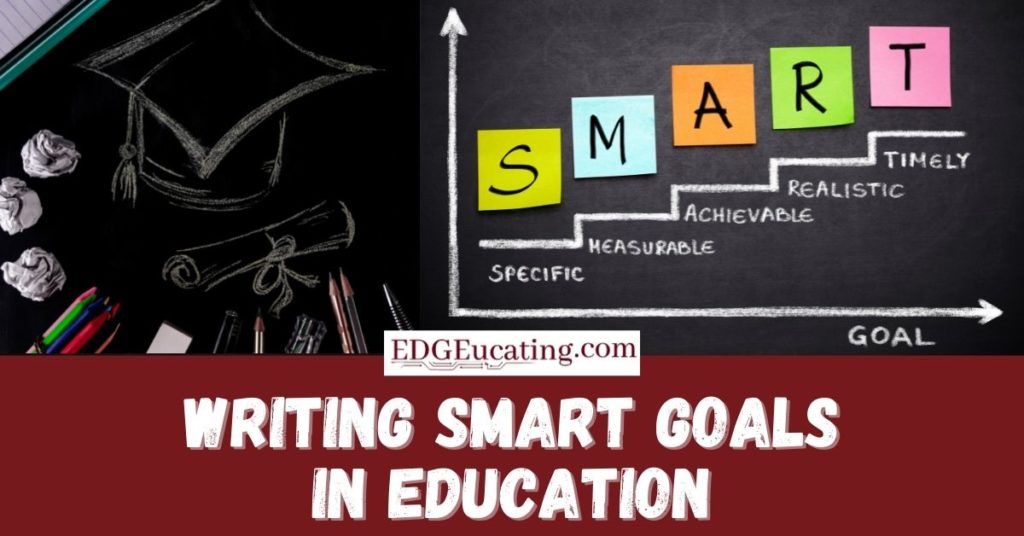Unprecedented challenges!
A new school year is underway, and students are facing unprecedented challenges as most are having to “learn how to learn” in a whole new way. Due to the learning hurdles dictated by COVID, students have brought traditional classroom learning back into their own homes, giving a huge rise to the relatively new concept of online education.
In addition to the new environment and learning hurdles that students are facing, teachers find themselves in new situations as well. This is the time of year when educators find themselves focusing on goal setting. Whether they are doing so for the purpose of student intervention, personal improvement, or student development. This process is even more challenging during these unprecedented times.

While students have always needed motivation and self-discipline to excel in school, this new academic climate takes that requirement to the next level. Students no longer have a teacher looking over their shoulder or instructing them to put their smartphones down and pay attention. It’s now up to all learners to be proactive in their studies and feel a sense of responsibility for their educational outcomes. Goal setting should be utilized as one of your distance learning tools, just as routine as something like Google Classroom or Zoom would be.
Teachers can support students in this endeavor by teaching proper goal-setting techniques so students can focus their efforts appropriately, effectively manage their time, and see the positive results of their work. And setting SMART goals isn’t just important for helping students focus and maintain their momentum during these months of virtual learning–it’s a critical skill they will use for the rest of their lives. This is a skill that can be more valuable than any cutting-edge education strategies that you could implement!
In addition to students learning to set their own goals, teachers are often responsible for setting goals for their students or with their students for the purpose of improvement plans. Regardless of the reason or environment, the process should follow the same set of criteria if the goal is going to be meaningful and produce results. Using the SMART goal-setting process will ensure that your goals are being set with a purpose and can be accurately measured.
What are SMART goals?
SMART (Specific, Measurable, Achievable, Relevant/Realistic, and Time-Bound/Time-limited) goals are established using a specific set of criteria that ensures your objectives are attainable within a certain time frame.
SMART is an acronym that you can use to guide goal setting. Khan Academy has a short video that explains SMART goals that I highly recommend using if you are implementing this with students.
The criteria of SMART goals are commonly attributed to Peter Drucker’s Management by Objectives concept. The first known use of the term occurs in the November 1981 issue of Management Review by George T. Doran. Since then, Professor Robert S. Rubin (Saint Louis University) wrote about SMART in an article for The Society for Industrial and Organizational Psychology. He stated that SMART has come to mean different things to different people, as shown below.
To make sure your goals are clear and reachable, each one should be:
- Specific (simple, sensible, significant)
- Measurable (meaningful, motivating)
- Achievable (agreed, attainable)
- Relevant (reasonable, realistic and resourced, results-based)
- Time-bound (time-based, time-limited, time/cost limited, timely, time-sensitive)
Professor Rubin also notes that the definition of the SMART acronym may need updating to reflect the importance of efficacy and feedback. However, some authors have expanded it to include extra focus areas; SMARTER, for example, includes Evaluated and Reviewed.
Writing a SMART goal entails working through each of those five components to build a measurable goal that encompasses exactly what needs to be accomplished and when, and how you’ll know when you’re successful. This approach eliminates generalities and guesswork, sets a clear timeline, and makes it that much easier to track progress and identify missed milestones.
How to write SMART goals?
How can this acronym help with goal setting? First, we offer a free SMART goal worksheet that you can download and use to help your students walk through this process. As for the acronym, let’s work through each component and illustrate just how to write a SMART goal.

For the purpose of this article, we will use the following goal to illustrate how it fits the SMART structure.
“I will complete all of my assignments this year at least one day before they’re due to avoid rushing through any work. To do this, I will list all of my assignments in order of their due date and work through them accordingly. I will spend 20 minutes every Sunday afternoon determining which projects need attention during the week ahead.”

SMART
In order for a goal to be effective, it needs to be specific. You have to drill down to the details.
A specific goal answers questions like:
What objective needs to be accomplished?
Who is responsible for it?
What steps will you take to achieve it?
Thinking through these questions will help you set a realistic goal that lays out what you’re aiming for and adds that crucial context or condition. The goal is specific because it states that they will complete all assignments one day before they’re due. The goal setter is the responsible party and it clearly defines what needs to be accomplished.

SMART
Being specific is a great start, but it doesn’t set a guide for measurement. Quantifying your goals (that is, making sure they’re measurable) is crucial in tracking progress and knowing when you’ve achieved your goal.
The above goal is measurable because each assignment has a due date. The goal setter will know their progress with the passing of each assignment’s deadline.

SMART
Goals should be realistically achievable. Achievability means ensuring that your goal is within reach (you’ll also sometimes see this letter representing “attainable”). Put simply, this is the point in the process when you give yourself a serious reality check. Is the goal you’ve outlined attainable? Is it something you or your student can actually accomplish? It’s important to consider any limitations that might hamper this goal.
By being organized with a list of assignments and a schedule for completing them, the goal setter has made an achievable goal. They have incorporated the exact tools necessary to achieve the goal.

SMART
Relevant to the goal setter or person needing to achieve the goal is one of the most important pieces, in my opinion. It is also an area I will elaborate on later in this article. Nobody sets goals for the fun of it. There should be a real benefit attached to reaching your chosen objective. If you are setting a goal for a student, this needs to be something the student finds relevant. It can’t just be about the teacher if the student is the one who has to achieve the goal.
During this step, you evaluate why the goal matters to you and/or your student. I like to say that this is where we give the goal a purpose or reason. Once you identify that key benefit, incorporate it into your SMART goal so everybody has a grasp on the larger picture.
The example goal above has a clear reason, to avoid turning in work that has been hurried. This means the goal-setter will avoid hasty completions and last-minute rushing. It identifies a clear purpose for the goal which gives it meaning and purpose for the goal setter or student.

SMART
Timelines are critical to goal setting. Good goals don’t stretch into infinity. Goals must have a distinct deadline. The final component of SMART goals is that they need to be time-bound. This is the key component that allows you to measure the success of the goal. It needs to be clear when a goal has been reached, which is why timelines are necessary.
The deadline for this example goal is threefold: 1) one day prior to each assignment’s due date 2) every Sunday night 3) the end of the school year. The goal setter has established 3 distinct timelines to measure the success or completion of the goal.
Why the goal matters…
Now that we have discussed what exactly SMART goals are and how to write them, let’s elaborate on the “R” – Relevant component. As I stated earlier in the article, this is where you evaluate why the goal matters to you and/or your student. You give the goal a purpose or reason. I find that this is the area that often is left out of goal setting in education or is misguided. This is the ‘WHY.’
An article written by Dr. Yogesh Daudkhane critically examines SMART goals and this missing ‘Why.’ It talks about how we often set goals but miss the ‘why’ of it and then we realize that after a certain period we are not interested in achieving the goal. This is because the goal is missing a purpose.
In education, this often happens because the teacher is setting the goal for the student and without their involvement. Goals can have a pervasive influence on behavior and performance if the student has a purpose and buy-in.
Make it part of your professional development!
Goal setting should be a professional development leadership strategy of every administrator for themselves and their teachers. The value that this would add to the school climate and culture is immeasurable! It would be more valuable than any cutting-edge classroom resources that they could purchase or mandate the use of. Just think about what your school would look like if everyone implemented true SMART goal setting related to every aspect of their job, from administrators down to students. Accountability and attitudes would completely shift and go in a much more positive direction.
How do you achieve your SMART Goal?
Now you know how to write a SMART goal, but knowing how to achieve it is a separate challenge. Actually achieving it is the whole point of creating one!
You’ve already taken a great first step by using the SMART criteria to set your goal. Now you need to set your and/or your student up for success. So just how do we do that?
First, you need to write it down. A study conducted by Dr. Gail Matthews, a psychology professor at the Dominican University in California, found that people are 42 percent more likely to achieve their goals when they write them down.
Next, establish regular checkups. Just like we go to the doctor for routine checkups, our goals need to be visited regularly. Any goal worth achieving will take time, and it’s important to check in on your progress regularly to ensure you are meeting your targets and staying on track according to your well-laid plan. Additionally, these recurring checkups and opportunities for feedback will keep everybody motivated, which is especially important for larger duration goals.
Lastly, celebrate your achievements. This means that every achievement is a win, even the small ones. Don’t wait until your entire goal is accomplished to celebrate. Taking the time to celebrate and acknowledge the smaller wins and milestones can keep you moving in the right direction. Even a small win will initiate a dopamine spike and trigger a motivation boost.
So, by setting smaller, incremental goals and then giving ourselves a hearty pat on the back when they are achieved, we can increase those dopamine spikes, which in turn encourages us to stay the course. This is increasingly important with younger children. Remember that their attention span is also shorter.
Increase you and your students’ success with SMART goals!
Now you know how to write and achieve SMART goals. In addition, research shows that someone becomes more likely to work through setbacks if pursuing a goal. So what are you waiting for? Help your students set SMART goals and don’t forget to set some for yourself as well. Make everyone more productive and your climate more positive by utilizing SMART goal setting.



